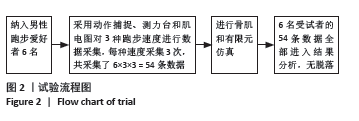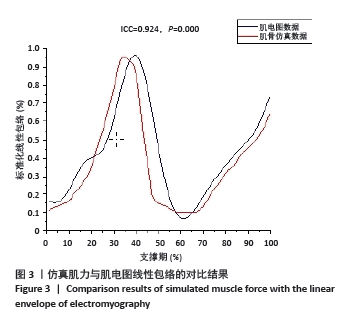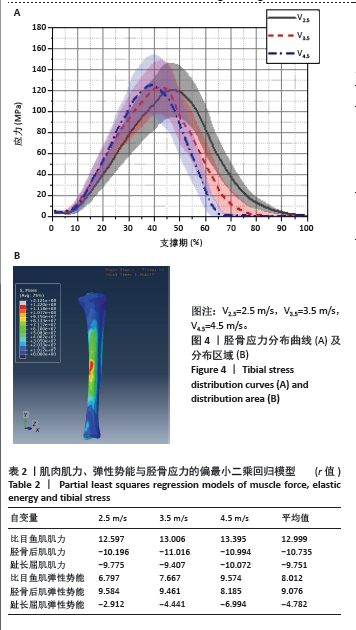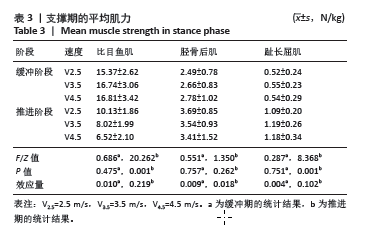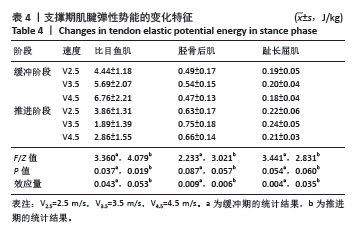[1] BLIEKENDAAL S, MOEN M, FOKKER Y, et al. Incidence and risk factors of medial tibial stress syndrome: a prospective study in Physical Education Teacher Education students. BMJ Open Sport Exerc Med. 2018;4(1):e000421.
[2] REINKING MF, AUSTIN TM, RICHTER RR, et al. Medial tibial stress syndrome in active individuals: a systematic review and meta-analysis of risk factors. Sports Health. 2017;9(3):252-261.
[3] MATTOCK JPM, STEELE JR, MICKLE KJ. Are Leg Muscle, Tendon and Functional Characteristics Associated with Medial Tibial Stress Syndrome? A Systematic Review. Sports Med Open. 2021;7(1):71.
[4] BECKER J, JAMES S, WAYNER R, et al. Biomechanical Factors Associated With Achilles Tendinopathy and Medial Tibial Stress Syndrome in Runners. Am J Sports Med. 2017;45(11):2614-2621.
[5] NADERI A, MOEN MH, DEGENS H. Is high soleus muscle activity during the stance phase of the running cycle a potential risk factor for the development of medial tibial stress syndrome? A prospective study. J Sports Sci. 2020;38(20):2350-2358.
[6] BOUCHÉ RT, JOHNSON CH. Medial tibial stress syndrome (tibial fasciitis): a proposed pathomechanical model involving fascial traction. J Am Podiatr Med Assoc. 2007;97(1):31-36.
[7] FRANKLYN M, OAKES B, FIELD B, et al. Section Modulus is the Optimum Geometric Predictor for Stress Fractures and Medial Tibial Stress Syndrome in both Male and Female Athletes. Am J Sports Med. 2008; 36(6):1179-1189.
[8] XU C, SILDER A, ZHANG J, et al. An Integrated Musculoskeletal-Finite-Element Model to Evaluate Effects of Load Carriage on the Tibia During Walking. J Biomech Eng. 2016;138(10). doi: 10.1115/1.4034216.
[9] XIONG B, YANG P, LIN T, et al. Changes in hip joint contact stress during a gait cycle based on the individualized modeling method of “gait-musculoskeletal system-finite element”. J Orthop Surg Res. 2022;17(1): 267.
[10] BEGUE J, PEYROT N, DALLEAU G, et al. Age-related changes in the control of whole-body angular momentum during stepping. Exp Gerontol. 2019;127:110714.
[11] HERMENS HJ, FRERIKS B, DISSELHORST-KLUG C, et al. Development of recommendations for SEMG sensors and sensor placement procedures. J Electromyogr Kinesiol. 2000;10(5):361-374.
[12] HUENAERTS C, DEWIT T, SOENTJENS D, et al. Differences in surface electrode placement and its effect on duration of EMG activity. Gait Posture. 2022;97:S7-S8.
[13] HOUGLUM P. Therapeutic Exercise for Musculoskeletal Injuries. Human Kinetics Publishers, 2016.
[14] CARBONE V, FLUIT R, PELLIKAAN P, et al. TLEM 2.0 – A comprehensive musculoskeletal geometry dataset for subject-specific modeling of lower extremity. J Biomech. 2015;48(5):734-741.
[15] YE B, LIU G, HE Z, et al. Biomechanical mechanisms of anterior cruciate ligament injury in the jerk dip phase of clean and jerk: A case study of an injury event captured on-site. Heliyon. 2024;10(11):e31390.
[16] ÜN K, ÇALIK A. Relevance of inhomogeneous–anisotropic models of human cortical bone: a tibia study using the finite element method. Biotechnol Biotechnol Equip. 2016;30(3):538-547.
[17] O’ROURKE D, BUCCI F, BURTON WS, et al. Determining the relationship between tibiofemoral geometry and passive motion with partial least squares regression. J Orthop Res. 2023;41(8):1709-1716.
[18] CICCHETTI D. Guidelines, Criteria, and Rules of Thumb for Evaluating Normed and Standardized Assessment Instrument in Psychology. Psychol Assess. 1994;6:284-290.
[19] BROWN AA. Medial Tibial Stress Syndrome: Muscles Located at the Site of Pain. Scientifica (Cairo). 2016;2016:7097489.
[20] LOVALEKAR M, HAURET K, ROY T, et al. Musculoskeletal injuries in military personnel—Descriptive epidemiology, risk factor identification, and prevention. J Sci Med Sport. 2021;24(10):963-969.
[21] GOLDMANN JP, BRÜGGEMANN GP. The potential of human toe flexor muscles to produce force. J Anat. 2012;221(2):187-194.
[22] HONEINE JL, SCHIEPPATI M, GAGEY O, et al. The functional role of the triceps surae muscle during human locomotion. PLoS One. 2013;8(1): e52943.
[23] LAI A, SCHACHE AG, LIN YC, et al. Tendon elastic strain energy in the human ankle plantar-flexors and its role with increased running speed. Exp Biol. 2014;217(17): 3159-3168.
[24] NEPTUNE RR, SASAKI K. Ankle plantar flexor force production is an important determinant of the preferred walk-to-run transition speed. J Exp Biol. 2005;208(Pt 5):799-808.
[25] BOHM S, MERSMANN F, SCHROLL A, et al. Speed-specific optimal contractile conditions of the human soleus muscle from slow to maximum running speed. J Exp Biol. 2023;226(22):jeb246437.
[26] DERRICK TR, HAMILL J, CALDWELL GE. Energy absorption of impacts during running at various stride lengths. Med Sci Sports Exerc. 1998; 30(1):128-135.
[27] BLAZEVICH AJ, FLETCHER JR. More than energy cost: multiple benefits of the long Achilles tendon in human walking and running. Biol Rev. 2023;98(6):2210-2225.
[28] EDAMA M, ONISHI H, KUBO M, et al. Gender differences of muscle and crural fascia origins in relation to the occurrence of medial tibial stress syndrome. Scand J Med Sci Sports. 2017;27(2):203-208.
[29] BECK BR, OSTERNIG LR. Medial tibial stress syndrome. The location of muscles in the leg in relation to symptoms. J Bone Joint Surg Am. 1994;76(7):1057-1061.
[30] ZHANG H, PENG W, QIN C, et al. Lower Leg Muscle Stiffness on Two-Dimensional Shear Wave Elastography in Subjects With Medial Tibial Stress Syndrome. J Ultrasound Med. 2022;41(7):1633-1642.
[31] SAEKI J, NAKAMURA M, NAKAO S, et al. Muscle stiffness of posterior lower leg in runners with a history of medial tibial stress syndrome. Scand J Med Sci Sports. 2018;28(1):246-251.
[32] KOVÁCS B, KÓBOR I, GYIMES Z, et al. Lower leg muscle-tendon unit characteristics are related to marathon running performance. Sci Rep. 2020;10(1):17870.
[33] YE D, LI L, ZHANG S, et al. Acute effect of foot strike patterns on in vivo tibiotalar and subtalar joint kinematics during barefoot running. J Sport Health Sci. 2024;13(1):108-117.
[34] LI J, SONG Y, XUAN R, et al. Effect of long-distance running on inter-segment foot kinematics and ground reaction forces: A preliminary study. Front Bioeng Biotechnol. 2022;10:833774.
[35] NOH B, MASUNARI A, AKIYAMA K, et al. Structural deformation of longitudinal arches during running in soccer players with medial tibial stress syndrome. Eur J Sport Sci. 2015;15(2):173-181.
[36] MORGAN KD, DONNELLY CJ, REINBOLT JA. Elevated gastrocnemius forces compensate for decreased hamstrings forces during the weight-acceptance phase of single-leg jump landing: implications for anterior cruciate ligament injury risk. J Biomech. 2014;47(13):3295-3302.
[37] ZHANG H, PENG W, QIN C, et al. Lower leg muscle stiffness on two‐dimensional shear wave elastography in subjects with medial tibial stress syndrome. J Ultrasound Med. 2022;41(7):1633-1642.
[38] SAKAMOTO K, SASAKI M, TSUJIOKA C, et al. An elastic foot orthosis for limiting the increase of shear modulus of lower leg muscles after a running task: A randomized crossover trial. Int J Environ Res Public Health. 2022;19(22):15212.
[39] OHYA S, NAKAMURA M, AOKI T, et al. The effect of a running task on muscle shear elastic modulus of posterior lower leg. J Foot Ankle Res. 2017;10:56.
[40] POHL MB, RABBITO M, FERBER R. The role of tibialis posterior fatigue on foot kinematics during walking. J Foot Ankle Res. 2010;3:6.
[41] REEVES J, JONES R, LIU A, et al. The immediate effects of foot orthosis geometry on lower limb muscle activity and foot biomechanics. J Biomech. 2021;128:110716. |
